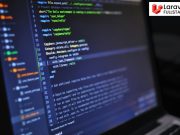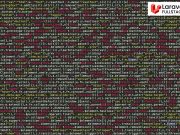In today’s dynamic digital landscape, building modern web applications requires a strategic approach, leveraging the strengths of both front-end and back-end technologies. A powerful combination that’s gaining immense popularity is React for the front-end and Laravel for the back-end, connected via APIs. This article delves into the benefits of this architecture, explores the integration process, and highlights why it’s a winning strategy for creating robust and scalable web applications.
React, a JavaScript library for building user interfaces, excels at creating interactive and dynamic front-end experiences. Its component-based architecture promotes code reusability, making development more efficient and maintainable. React’s virtual DOM optimizes performance by minimizing direct manipulation of the actual DOM, resulting in smoother and faster rendering. Many companies want to hire react developer to leverage these benefits for their projects.
Laravel, a PHP framework, provides a solid foundation for building robust and scalable back-end systems. Its elegant syntax, extensive features, and strong security measures make it a favorite among developers. Laravel’s built-in tools for routing, authentication, database management, and templating streamline the development process, allowing developers to focus on building core application logic.
The true power of React and Laravel lies in their ability to work seamlessly together through APIs. APIs (Application Programming Interfaces) act as intermediaries, enabling communication and data exchange between the front-end (React) and the back-end (Laravel). This decoupling of the front-end and back-end offers several advantages.
One key advantage is the separation of concerns. React handles the user interface and user experience, while Laravel manages the data, business logic, and security. This separation leads to cleaner code, improved maintainability, and easier testing. It also allows front-end and back-end developers to work independently, accelerating the development process.
Another significant benefit is scalability. By decoupling the front-end and back-end, you can scale each independently based on their specific needs. For example, if the front-end experiences heavy traffic, you can scale the React application without affecting the back-end. Similarly, if the back-end requires more processing power, you can scale the Laravel application without impacting the front-end.
Building a React and Laravel application with API integration involves several key steps. First, you need to set up your Laravel API. This involves defining routes, creating controllers, and implementing the necessary logic to handle requests from the React front-end. Laravel provides convenient tools for building APIs, such as resource controllers and API authentication packages.
Next, you need to create your React application. This involves setting up a React project, defining components, and implementing the logic to interact with the Laravel API. You can use libraries like Axios or Fetch to make HTTP requests to the API and retrieve data. As your project evolves, you might need to find the best react developer to assist with complex tasks.
Data exchange between React and Laravel typically happens in JSON (JavaScript Object Notation) format. React sends requests to the Laravel API, and Laravel responds with JSON data. React then parses the JSON data and renders it in the user interface.
Authentication is a crucial aspect of any web application. Laravel provides robust authentication mechanisms that can be easily integrated with React. You can use token-based authentication, where Laravel generates a token for authenticated users, and React includes this token in subsequent requests to the API.
State management is also an important consideration in React applications. Libraries like Redux or Context API can help manage the application’s state in a predictable and efficient manner. These libraries provide a centralized store for the application’s data and allow components to access and update the data as needed.
Testing is essential for ensuring the quality and reliability of your application. Both React and Laravel offer testing frameworks and tools. React applications can be tested using Jest and Enzyme, while Laravel applications can be tested using PHPUnit.
When considering your team, some companies seek to hire laravel programmer with specific experience in building API-driven applications. This ensures a smooth integration and efficient development process. Other companies consider hiring full stack developers to handle both the frontend and backend.
In conclusion, combining React and Laravel with API integration offers a powerful and flexible approach to building modern web applications. The separation of concerns, scalability, and independent development capabilities make it a winning strategy for creating robust and maintainable applications. By leveraging the strengths of both technologies, you can deliver exceptional user experiences and build scalable systems that meet the demands of today’s digital landscape.
Laravel Fullstack offers remote tech resources, including Laravel developers, React.js experts, Vue.js specialists, Python programmers, agentic AI developers, and SEO and content writing services. Visit Laravel Fullstack to learn more about how we can help you build your next web application.














